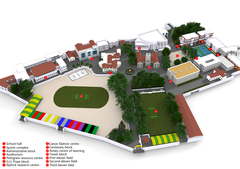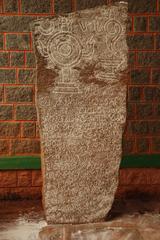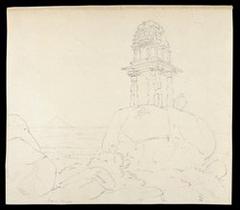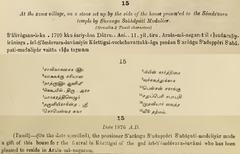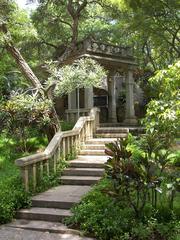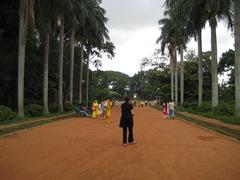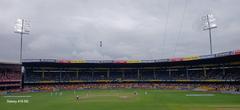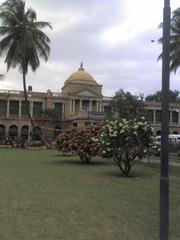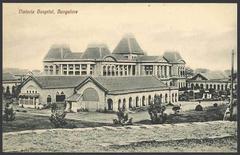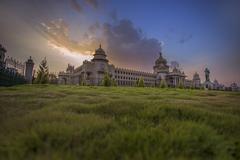
Attara Kacheri Bengaluru: Visiting Hours, Tickets, and Historical Overview
Date: 04/07/2025
Introduction
Located opposite Cubbon Park in the heart of Bengaluru, Attara Kacheri is a striking red neoclassical building that stands as both a relic of the city’s colonial past and the present seat of the Karnataka High Court. Constructed between 1864 and 1868, it originally housed the eighteen administrative departments of the Mysore State, a fact reflected in its name—“Attara Kacheri” translates to “Eighteen Offices.” Today, the building not only represents a key chapter in Bengaluru’s architectural and administrative history but continues to play a central role in the legal governance of Karnataka.
This guide covers Attara Kacheri’s origins, architectural highlights, cultural significance, and essential visitor information, including opening hours, ticketing policies, accessibility, travel tips, and nearby attractions. Whether you’re a history enthusiast, architecture lover, or a curious traveler, a visit to Attara Kacheri offers a unique window into Bengaluru’s evolving civic identity.
For official information and practical updates, consult resources like BangaloreIndia.org.uk, Localsamosa, and the Official Karnataka High Court Website.
Table of Contents
- Origins and Construction
- Architectural Style and Features
- Role in State Administration and Judiciary
- Cultural and Symbolic Significance
- Visiting Hours, Tickets, and Accessibility
- Getting There
- Nearby Attractions
- Visitor Tips
- Frequently Asked Questions (FAQ)
- References & Further Reading
Origins and Construction of Attara Kacheri
Attara Kacheri’s roots go back to the mid-19th century, following significant administrative reforms in the princely state of Mysore. The British, seeking to centralize and streamline governance, initiated the construction of a grand building to house the state’s eighteen key administrative departments. The term “Attara Kacheri” derives from Hindustani, meaning “Eighteen Offices,” reflecting its original function (bangaloreindia.org.uk).
Commissioned by British Commissioner Lewin Bentham Bowring and executed by Rao Bahadur Arcot Narayanaswamy Mudaliar, construction began in 1864 and concluded in 1868. The site was selected for its prominence opposite Cubbon Park, enhancing both its symbolic and practical significance. The building cost around INR 450,000, a substantial investment for the era.
Architectural Style and Features
Attara Kacheri is a prime example of neoclassical architecture, a style characterized by grandeur, symmetry, and references to classical Greek and Roman forms. The two-storied building is painted a vibrant red, constructed from locally sourced brick and stone. Its façade boasts imposing Corinthian columns, arched windows, and a balanced portico, all designed to convey authority and permanence (bangaloreindia.org.uk).
Key architectural highlights include:
- Corinthian Columns: Lending gravitas to the main entrance.
- High Ceilings and Arched Windows: Maximizing ventilation and natural light.
- Spacious Corridors and Verandahs: Adapted for India’s climate.
- Central Hall: Featuring a portrait of Sir Mark Cubbon, a pivotal figure in Mysore’s administration.
The building’s classic lines and red façade have earned it the nickname “The Red Building” and make it a favorite subject for photographers and artists.
Role in State Administration and Judiciary
Colonial and Early Post-Colonial Era
Initially, Attara Kacheri functioned as the administrative heart of the Mysore State, housing the Dewan (Prime Minister), Revenue, Police, Public Works, and other departments. The centralization under one roof was key to the state’s modernization under British supervision (Citizen Matters).
Transition to High Court
After India’s independence and the subsequent reorganization of states in 1956, Attara Kacheri became the seat of the Karnataka High Court. Since then, it has played a central role in the state’s judicial system, hosting landmark cases and serving as a symbol of justice and governance (Wikipedia).
The building accommodates 37 court halls and has expanded over the years, including a 1995 annexe that mimics the original architecture (Citizen Matters).
Cultural and Symbolic Significance
Attara Kacheri is more than an administrative edifice; it is a living symbol of Bengaluru’s layered history. Its red façade, facing Vidhana Soudha’s white neo-Dravidian columns, visually and symbolically connects the city’s colonial legacy with modern statehood (Praveen Musafir).
Key cultural aspects:
- Civic Identity: The building’s continued use and preservation reflect Bengaluru’s embrace of its past while looking forward.
- Public Engagement: Widespread protests in the 1980s saved Attara Kacheri from demolition, marking an important milestone in the city’s heritage conservation movement (Wikipedia).
- Judicial and Civic Memory: The High Court Museum (open on special occasions) displays artifacts and historic documents, further cementing its cultural role (Citizen Matters).
Visiting Hours, Tickets, and Accessibility
Visiting Hours:
- Monday to Friday: 10:00 AM – 5:00 PM
- Saturday & Sunday: Closed
- Hours may vary during court sessions, holidays, or special events. Check the Official Karnataka High Court Website before planning your visit.
Entry & Tickets:
- Viewing the exterior and gardens is free.
- Access to the interior is generally restricted to those with official business. The High Court Museum may be accessible by prior arrangement.
Accessibility:
- The grounds and exterior are accessible, with paved paths around Cubbon Park suitable for wheelchairs and strollers.
- Due to the building’s heritage status, full interior accessibility is limited; contact the court administration for detailed information.
Getting There
- Location: Dr. B. R. Ambedkar Road, opposite Vidhana Soudha, within Cubbon Park, central Bengaluru.
- Nearest Metro: Cubbon Park (Purple Line), a short walk from the building.
- By Bus: Multiple BMTC routes serve the Cubbon Park and Vidhana Soudha area.
- Parking: Limited; public transport or walking from nearby attractions is recommended.
Google Maps: Attara Kacheri Location
Nearby Attractions
- Cubbon Park: Expansive city park perfect for walks and relaxation (bengaluru.com).
- Vidhana Soudha: Karnataka’s legislative seat, renowned for neo-Dravidian architecture (localsamosa).
- Visvesvaraya Industrial and Technological Museum: Interactive science exhibits for all ages.
- Government Museum & Venkatappa Art Gallery: Showcasing regional history and art (rajasthantourplanner.com).
Visitor Tips
- Best Time to Visit: October to March, during Bengaluru’s cooler months. Early mornings and late afternoons offer the best light for photography.
- Dress Modestly: As Attara Kacheri is a functioning court, respectful attire is recommended.
- Court Etiquette: Maintain silence and decorum; mobile phones should be on silent.
- Photography: Exterior photography is generally permitted, but always confirm with security. Photography inside may be restricted.
Frequently Asked Questions (FAQ)
Q: What are Attara Kacheri’s visiting hours?
A: Monday to Friday, 10:00 AM – 5:00 PM. Closed on weekends and public holidays.
Q: Is there an entry fee?
A: No, viewing the exterior and grounds is free.
Q: Are guided tours available?
A: No regular guided tours, but local heritage walks may include the site.
Q: Is Attara Kacheri accessible for visitors with disabilities?
A: The exterior and park paths are accessible; interior access is limited.
Q: How do I reach Attara Kacheri?
A: By metro (Cubbon Park station), bus, or taxi. Parking is limited.
Visual Gallery

Image alt text: Attara Kacheri visiting hours and tickets - Iconic Karnataka High Court building in Bengaluru with red façade and neoclassical columns.
References & Further Reading
- Attara Kacheri Bengaluru: Visiting Hours, Tickets, History & Attractions, BangaloreIndia.org.uk
- Vidhana Soudha and Attara Kacheri, Localsamosa
- Attara Kacheri, Citizen Matters
- Attara Kacheri, South Tourism
- Attara Kacheri Historical Overview, RajasthanTourPlanner.com
- Karnataka Tourism Official Portal
- Official Karnataka High Court Website
- Cubbon Park, Bengaluru.com
Conclusion
Attara Kacheri is a cornerstone of Bengaluru’s civic and architectural landscape, seamlessly blending the city’s colonial heritage with its ongoing judicial and cultural life. Its enduring red façade, neoclassical grandeur, and pivotal administrative role make it a must-visit for anyone seeking to understand the layers of history that define modern Bengaluru. Surrounded by lush parks and significant landmarks, a visit to Attara Kacheri offers both inspiration and insight into Karnataka’s journey from princely state to vibrant democracy.
For personalized audio tours, travel tips, and the latest visitor information, download the Audiala app and explore our guides to Vidhana Soudha and Cubbon Park.




